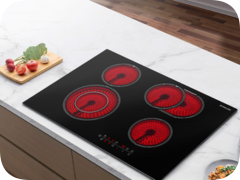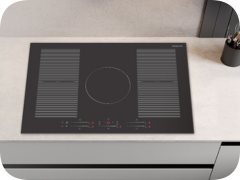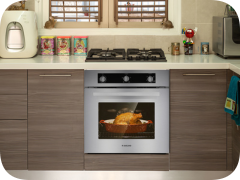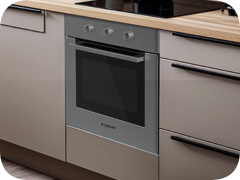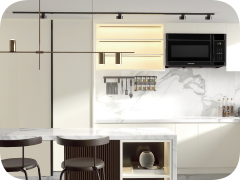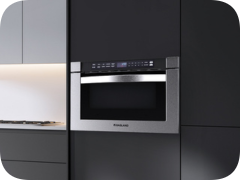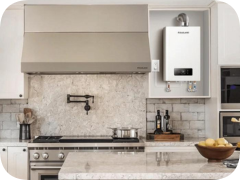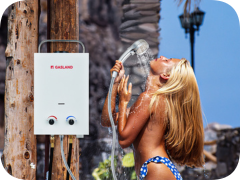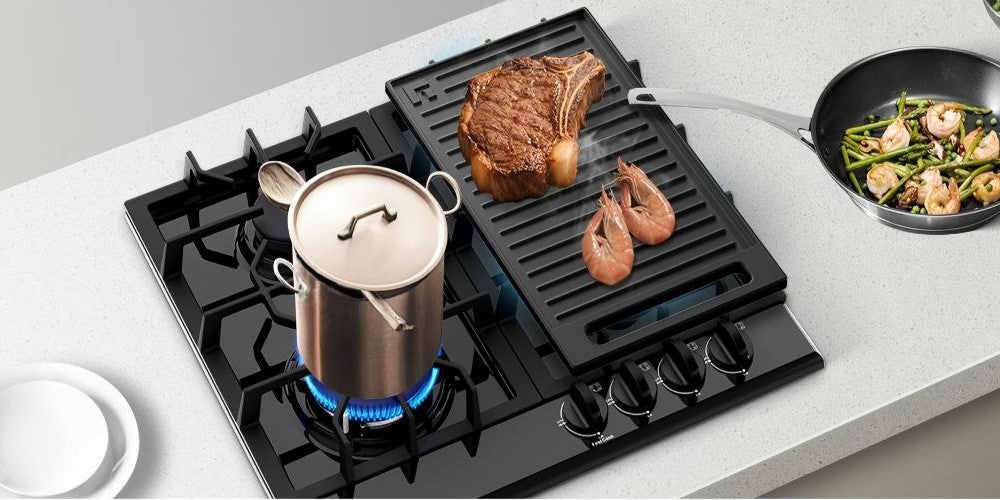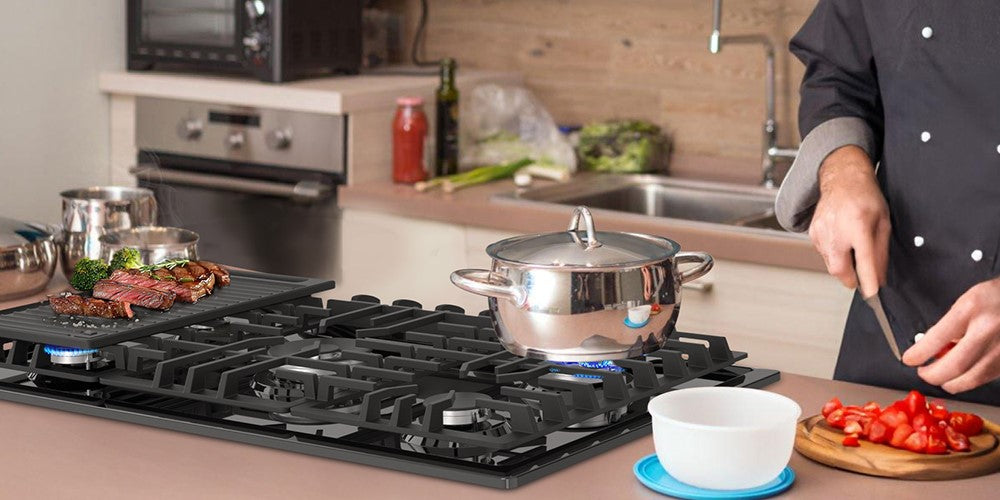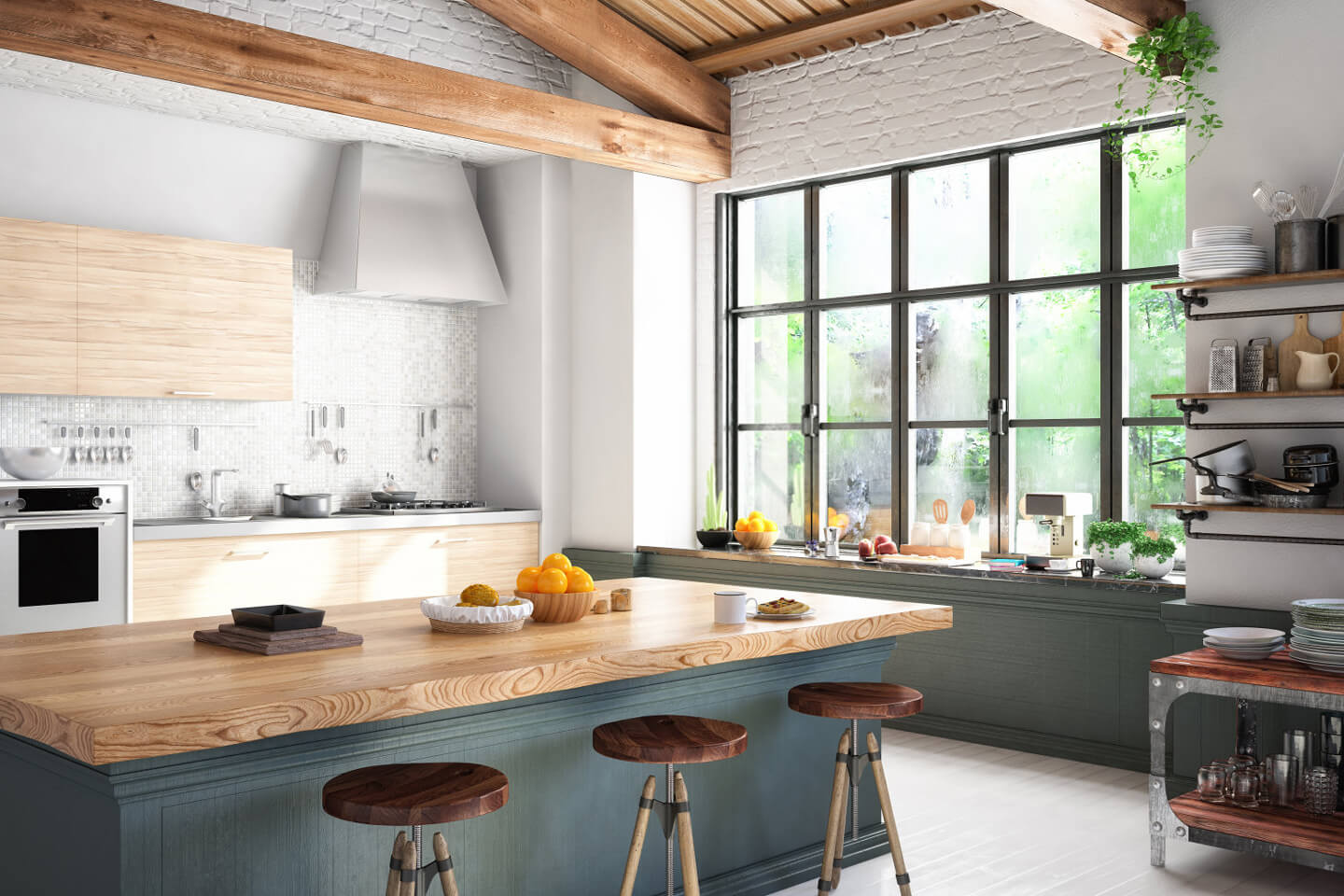-
BTU (British Thermal Units) on a cooktop is a heat rate (BTU per hour)—an energy output measurement, not a quality score.
-
Higher burner heat output helps with fast boiling and searing; low simmer burners matter for sauces and chocolate.
-
For most homes, the best BTU for everyday cooking is a mix of 9,000–12,000 BTU burners, plus one 15,000–18,000 BTU power burner.
-
Don’t choose by numbers alone—heat efficiency, pan contact, burner strength, ventilation, and gas cooktop specifications all influence cooking performance.
If you’ve ever wondered what does BTU mean on gas cooktops, this guide turns specs into real-world results on your GASLAND kitchen.
What does BTU mean on gas cooktops
BTU stands for British Thermal Units. On residential burners, you’ll see BTU/h (BTU per hour), which describes burner heat output—how much heat a flame can deliver over time. Think of it like a kitchen appliance power rating for gas: higher output can boil water faster and recover pan temperature more quickly when cold food hits.
Quick conversions (for cross-references):
-
kW = BTU/h × 0.000293071
-
BTU/h = kW × 3412.142
| BTU/h | ≈ kW |
|---|---|
| 9,000 | 2.64 |
| 12,000 | 3.52 |
| 15,000 | 4.40 |
| 18,000 | 5.28 |
| 20,000 | 5.86 |
This isn’t just a spec-sheet number—energy output measurement translates into how your burner behaves with real food in real pans.
Gas cooktop high BTU vs low BTU
Shoppers often fixate on the biggest number, but gas cooktop high BTU vs low BTU is about balance:
-
High-output burners (15,000–22,000 BTU): Rapid boiling, intense searing, large stockpots, and better heat recovery for stir-fry. These can transform weeknights.
-
Low simmer burners (3,000–5,000 BTU with a stable flame): Gentle sauces, melting chocolate, custards—precision where scorched edges ruin a dish.
-
Heat efficiency: Two burners with the same rating can behave differently. Pan contact (flame tips under the pan, not licking the sides), grate design, and lids all shape real-world cooking performance.
-
Burner strength ≠ everything: The best kitchens pair one powerful burner with versatile mid-range burners and at least one true simmer option.
-
Ventilation matters: More BTU means more heat and moisture. Match with a strong, properly sized hood.
In short, the debate isn’t “more vs less,” but “the right mix for how you cook.”
Ideal BTU rating for home cooking
For typical US families, a practical setup on a modern gas cooktop is:
-
One power burner in the 15,000–18,000 BTU range for fast boiling and steak searing.
-
Two to three mid burners around 9,000–12,000 BTU for daily tasks.
-
One true low-simmer position (via dual-stack or precise control) for sauces.
That distribution nails convenience without overwhelming your ventilation. If you’re asking, “What’s the best BTU for everyday cooking?” this is the sweet spot many home cooks prefer—ample power plus finesse. And if you want a branded upgrade path, explore GASLAND models that combine power with fine simmer control.
BTU requirements for different pots
Pan size and material change what feels “fast.” Here’s a simple BTU comparison guide to map common cookware to sensible burner heat output:
| Pot / Pan Type | Typical Size | Suggested Burner (BTU/h) | Notes |
|---|---|---|---|
| Small saucepan | 1–2 qt | 5,000–8,000 | Prevent scorching dairy/sugars; prioritize low simmer burners. |
| Everyday skillet | 10–12 in | 9,000–12,000 | Sauté, pancakes, weeknight stir-fries in flat-bottom pans. |
| Dutch oven / stockpot | 6–8 qt | 12,000–18,000 | Soups, stews; boost with a lid for heat efficiency. |
| Large stockpot | 10+ qt | 15,000–22,000 | Canning, pasta parties; consider a robust hood. |
| Grill pan / heavy cast iron | 10–12 in | 12,000–18,000 | Needs headroom for heat recovery after food hits. |
Matching BTU requirements for different pots helps you pick the right burner each time instead of cranking everything to high.
BTU needed for wok cooking
Classic wok cooking thrives on high-output burners and wide, even flame coverage. For flat-bottom woks at home, 18,000–22,000 BTU plus good ventilation deliver better “wok-hei.” If you’re eyeing a future upgrade, confirm gas cooktop specifications for wok grates or rings on your next gas cooktop, and look at dual-ring options for flexibility. That nails the real-world BTU needed for wok cooking without turning your kitchen into a restaurant line.
Boil-time reality check (why similar BTU can feel different)
Two 15k BTU burners can boil at different speeds because:
-
Pan geometry & contact: A wide pot spreads flame energy; a narrow tall pot wastes heat up the sides.
-
Lids & water start temp: A lid can shave minutes; colder tap water delays.
-
Altitude & fuel: Higher altitude = lower oxygen; LP vs NG can differ by orifice and regulator.
-
Design details: Dual-ring patterns can distribute heat more evenly than tight clusters.
These nuances explain why a smartly designed GASLAND burner can feel punchier at the same rating.
Safety, install, and ventilation quick notes
-
Follow the manual and local code for clearances and hook-ups.
-
Confirm gas cooktop specifications if you’re converting NG ↔ LP (orifices, regulator, and pressure).
-
Size the hood for total output and pan coverage; bigger isn’t always louder if the capture area is right.
FAQs
Q1: Does a higher BTU mean my bills go up?
BTU/h is a rate. Your gas usage depends on how long and at what setting you cook. Efficiency and lids help.
Q2: Can I get restaurant-style searing at home?
Yes—pair a high-output burner (15k–18k+) with heavy pans. Let the pan preheat and avoid crowding.
Q3: Are burner numbers the only thing to compare?
No. Consider kitchen appliance power rating equivalents, real control at low settings, and overall heat efficiency. Reviews that test recovery after adding cold food are great proxies for cooking performance.
Q4: I’m comparing models—what else matters besides BTU?
Look for even flame spread, stable low flame, sturdy continuous grates, and the right burner strength mix. If you cook a lot of noodles or stocks, prioritize one big burner; for sauces, prioritize a true simmer.
Q5: Where should I start shopping?
Begin with a size and layout that fits your space, then shortlist a gas cooktop that matches your burner mix. Explore GASLAND for balanced power and control.
Want a quick shortlist of models with a 15k–18k power burner plus a reliable simmer? Tell me your size (24/30/36 in), fuel (NG/LP), and must-have features (dual-ring, wok grate). I’ll map your needs to the right gas cooktop setups from GASLAND.
Keep reading: Understanding Dual Ring Burners on Gas Cooktops: Benefits and Uses — a practical follow-up on flame patterns and simmer control.
👉 https://gaslandchef.com/blogs/news/understanding-dual-ring-burners-on-gas-cooktops-benefits


